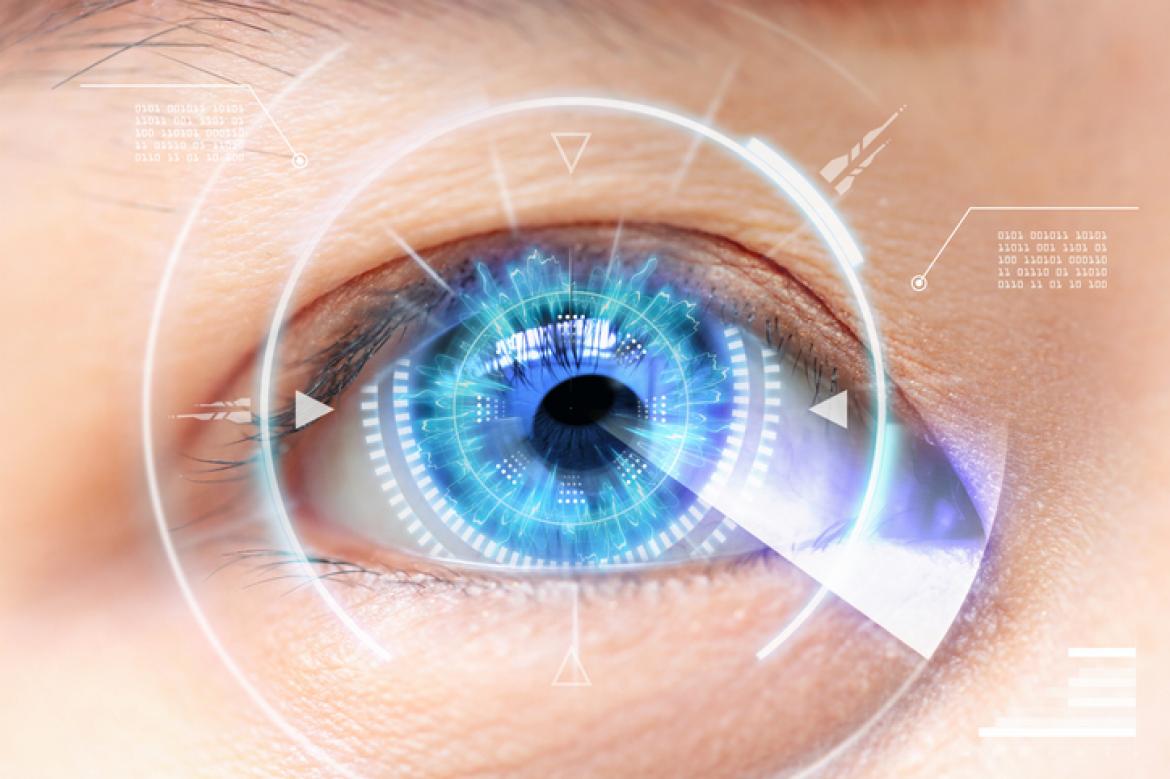5 Common Myths About Cataracts

1. Eyedrops can cure cataracts
Despite much work and scientific pursuit, an eyedrop has not yet been developed that effectively and reliably treats cataracts in humans. Today surgery remains the only way to definitively treat cataracts.
Cataract surgery is one of the most commonly performed and successful operations in the world. The vast majority of cases are performed safely, with minimal complication rate, and generally high satisfaction following the surgery.
2. Glasses are not needed after cataract surgery
Modern cataract surgery involves replacing the cloudy lens with a clear, artificial intraocular lens. This lens generally provides terrific viewing, but usually cannot focus at near and distance at the same time.
Generally, when cataract surgery is performed, the lenses are chosen to focus both eyes for distance, and so reading spectacles (or multifocal spectacles) are needed for near vision activities like reading.
Cataract, obscuring the light that enters the eye and clouding vision.
A cataract can be replaced with an artificial lens to improve vision.
However, for people wishing to avoid taking reading glasses on and off, there are some premium intraocular lens choices to consider:
Multifocal lenses
Some premium intraocular lenses are multifocal– they can focus at both near and distance. But, these lenses are not problem free and may cause haloes, sparkles around lights and other visual phenomena that can be quite bothersome. For many people, these lenses are more bothersome than reading glasses!
Many people are very pleased with multifocal lenses, so it is a matter of choosing the right lens for the right person – and this is a skill for an experienced cataract surgeon.
Blended vision
Another good option for people not wishing to rely on reading glasses is known as “blended vision”. In blended vision, the one dominant eye is chosen to be focused for distance, while the non-dominant eye is focused at a near point; i.e. one eye does the distance viewing, while the other does the reading and computer work.
Sound confusing? Not everyone can cope with this difference between the eyes, which is why we need to test the arrangement before surgery with contact lenses simulating the arrangement. For the majority of people who find this quite comfortable, blended vision is an excellent way of avoiding taking readers on and off constantly; although for very fine vision (e.g. small newspaper print) glasses are still often required.
3. Cataract surgery is a breeze
Even when done well, cataract surgery is often more involved than people might expect. A lot of preparation goes into cataract surgery – meticulous eye examination, open discussion of best lens selection, and careful measurement of the eye with precision instruments to ensure the best possible lens is chosen.
On the day of surgery, the operation itself is relatively brief (20-30 minutes). However, there can be 1-2 hours of preparation time when you arrive at the hospital, get admitted by the nurse, and are administered drops to temporarily widen the pupil (necessary for surgery).
You will be met by your friendly anaesthetist just before the surgery who will ensure you are relaxed, and the eye is kept comfortable for the procedure. After the procedure, you will leave with a shield over the eye to keep it safe and comfortable; the shield will be removed the next day on review by your surgeon.
In the days after cataract surgery, eye drops are generally required for 4 weeks, and it is common for the eye to be sometimes gritty, red and sore for several days or even weeks following the procedure. Usually, this settles down with time. But, the vision results are generally worth it!
4. Cataracts only happen to very old people
When we are born, the lens is crystal clear; as the years pass, it begins to become more yellow/brown, and develop cloudy opacities – this is a cataract. Cataract formation begins in mid-adult life, but only generally becomes symptomatic once we reach our 60s.
Cataracts become ready for surgery by the time we reach our 60s, 70s, 80s and in some cases, 90s! However, cataracts can occur in even younger people. Some diseases such as diabetes, taking steroid medications, eye trauma, excessive drinking alcohol or smoking can lead to an earlier onset of cataract formation. Rarely, children with eye diseases (e.g. inherited eye diseases) can develop cataracts in young age.
5. Cataracts can come back after surgery
There is a myth that cataracts can develop again long after cataract surgery. This is not true. A cataract is a clouding/discolouration of the natural human lens, affecting vision, and cataract surgery involves removal of that lens, and replacement with an artificial one, to improve vision. This artificial one stays there forever.
So, why do some people say that the cataract has come back? When the cataract is removed at the time of surgery, it is removed from its natural bag, into which the artificial lens is placed. The bag that the lens sits in can become cloudy over time, affecting the vision with opacity, and making it seem like the cataract has come back. However, this can be readily treated with a simple laser procedure in rooms, restoring vision to clarity.